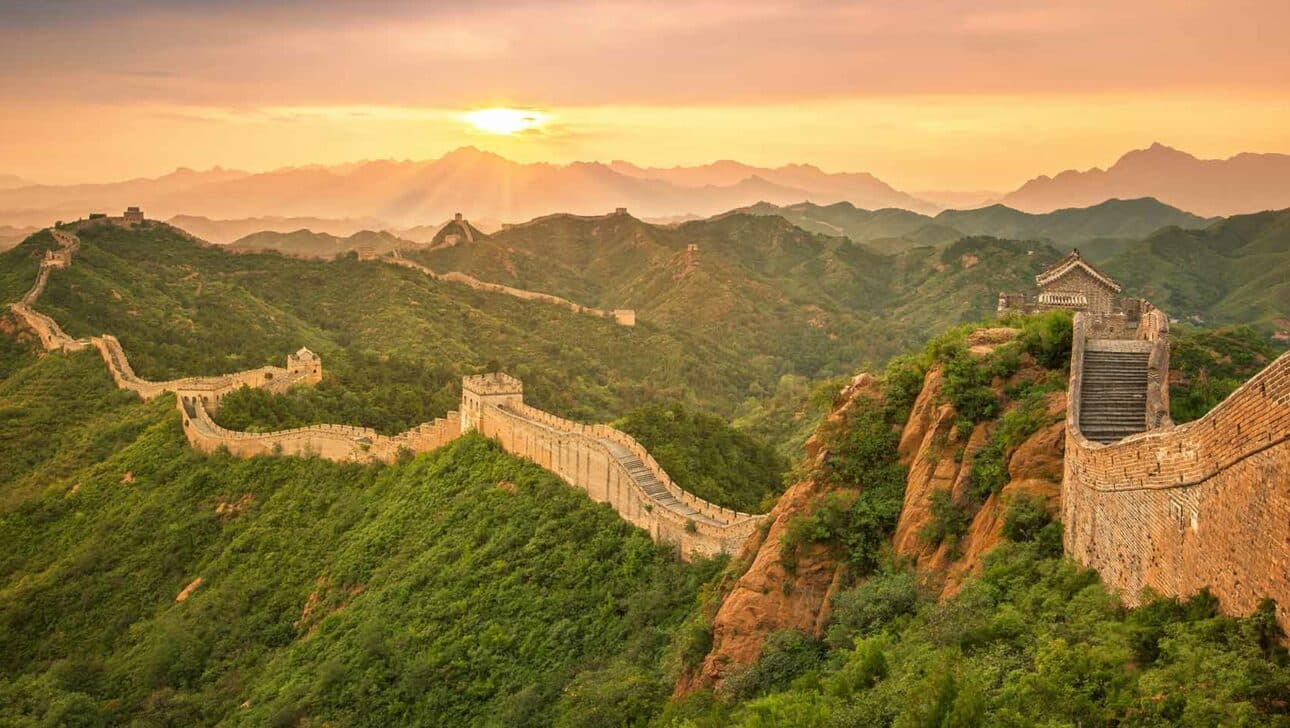Arguably the most recognized wall in the world, the Great Wall serves as a defining emblem of Chinese culture and strength.
A UNESCO World Heritage Site and one of the greatest world wonders, the Great Wall snakes across deserts, valleys, mountains and plateaus for more than 13,000 miles from east to west China. Rumor has it that you can see the Great Wall from the moon!
Several separate sections comprise the Great Wall. Construction on some segments began as early as 220 B.C., when the first Emperor of a unified China, Qin Shi Huang, wanted a fortification system that would keep out pesky barbarian nomads.
For centuries, soldiers, prisoners, and locals built the structure from earth and stone, creating 12-foot-tall ramparts and guard towers at various intervals. It’s been said that of the millions who labored to build the wall, more than 400,000 died during its construction.
During the Ming dynasty, much of these fortifications were rebuilt, and construction of the Great Wall that we see and appreciate today began. Workers built bridges, temples, and pagodas into the wall, which splits into north and south lines around Juyong Pass.
JOIN US ON AN AWE-INSPIRING JOURNEY – THE TRAVEL EQUIVALENT OF FENG-SHUI!
From Jinshanling to Simatai
Lucky for us, the section of the Great Wall that we will explore, from Jinshanling to Simatai, doesn’t see as many visitors as easier-to-reach sections. We may get some offers for tour guide services from entrepreneurial locals, but we won’t have to walk among a thick tourist crowd.
The Jinshanling Great Wall contains many original features, with watchtowers that appear every 100 meters or so, as well as combat towers, embrasures, and crenellations. As we hike along sections, our expert guide explains the history and engineering of the wall, which is quite remarkable for its day.
Along our seven-mile journey, we will see damaged parts of the wall, reminding us of its need for protection. We will also take in breathtaking, mountainous views as we rest with a picnic lunch. Porters from a nearby village will accompany us with water and snacks.
As we approach Simatai, we will notice parts of the wall built on steep crags. Be prepared, the Simatai Great Wall is known for its steepness, but it’s also one of the few, if not the only, section that looks the same as it did during the Ming dynasty.
Distinctive watchtowers and other structures also mark this section of the wall. In particular, the Simatai Great Wall is home to the Fairy Maiden Tower, which features marble arches carved into lotus patterns. It sits on an 85-degree slope called Stairway to Heaven. Reservoirs such as Hot Spring Lake provide year-round water, which gives this section a more organic feel than more arid stretches.
These untouched sections of the Great Wall give us a glimpse into its long history. We can imagine dignitaries standing on the Great Wall, or soldiers monitoring from the watchtowers. Combined with detailed commentary from our guide, not many visitors can claim such an intimate and truly great experience.
While we are not currently operating our Cultural Walking Adventure to China, learn more about other Asian destinations and start planning your trip of a lifetime today!




